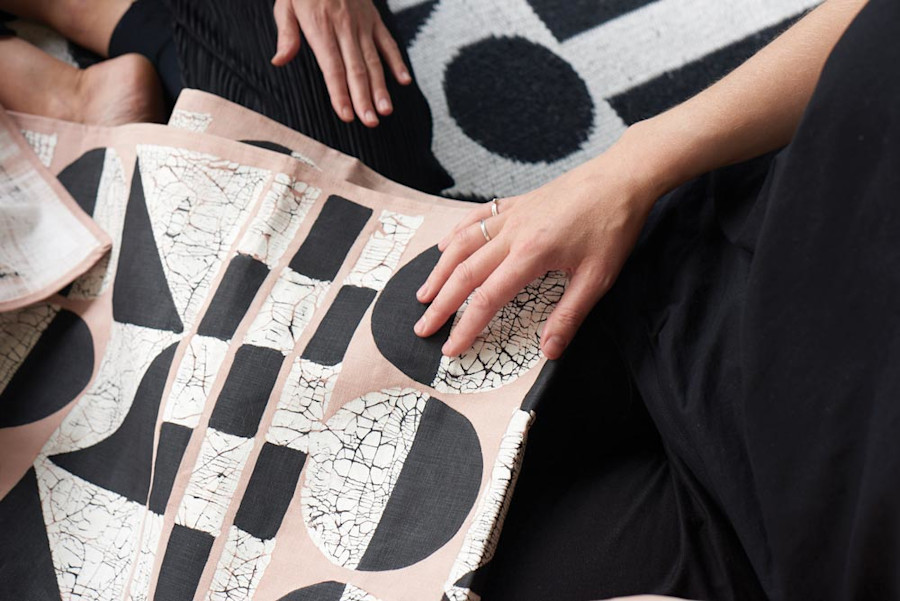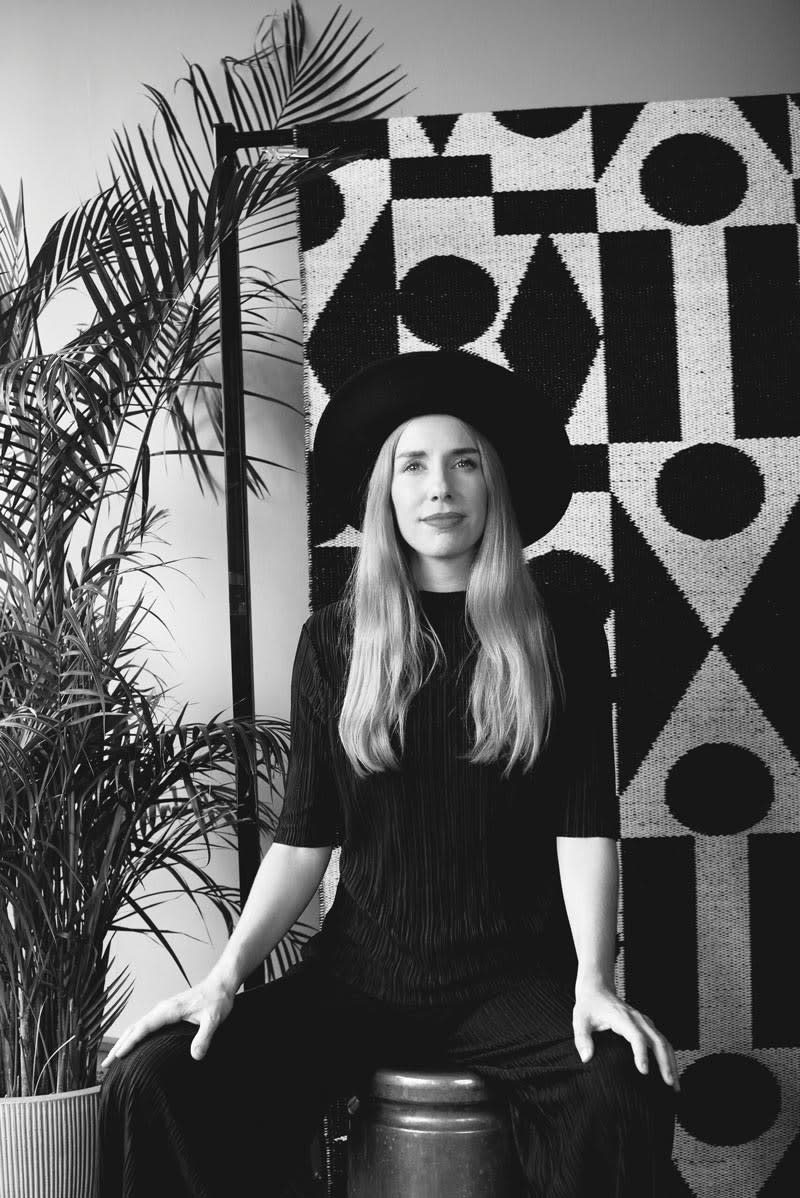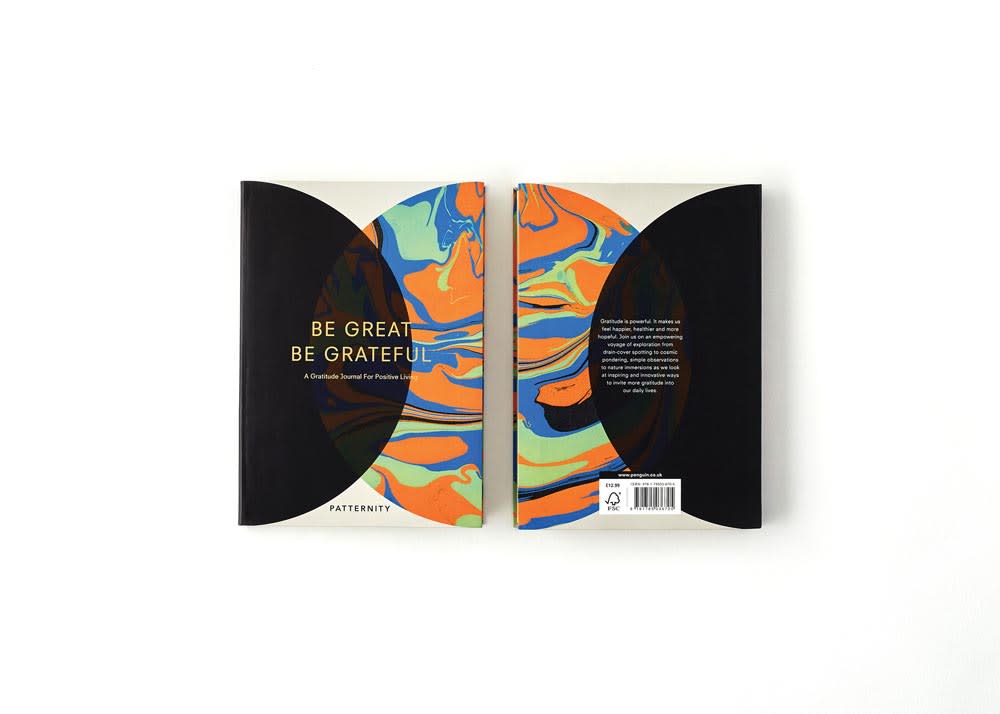In Conversation with Anna Murray

Anna Murray is the co-founder of PATTERNITY, a conscious creative organisation inspired through pattern research, design and experience.
We’re exploring this word ‘Restless’ and how it defines or abstracts design process in any variety of contexts. What does that word mean for you?
As someone who has experienced restlessness for as long as I can remember, I believe there is really useful information in feeling restless. It feels like a current of energy passing through; creativity finding expression. I often experience restlessness when I feel unable to channel creativity or manifest ideas as I feel I need to, whether that’s conscious or not. The more aware I become, the more I learn that in restlessness lies real opportunity for growth and expansion in the deepest sense. I’ve also come to notice that there is a pattern to my restlessness and discomfort. A time of extreme restlessness and anxiety often comes before a feeling of flow and positivity, as if a recalibration or a systems upgrade is taking place. It’s the hardest work of all to remember this at the time but it’s been perhaps one of my greatest learnings.
How do you deal with restlessness and use it as a force for action rather than something to run away from?
I’ve explored many ways to work with the more shadowy side of my creativity over the years to help me create more sustainably and use it as a positive force for others. From self-help to therapy, silent retreats, plant medicines... all of this searching has really pointed to quite similar and simple places, which have in turn inspired my own creative outputs and explorations.
When I feel restless I’ve learnt to try not to let uncomfortable feelings take me on a downward spiral of overthinking and worrying. Rather than fearing that I’m doing something wrong and try to ‘solve’ the situation with my brain or jump straight into heady action, more and more when I notice myself going there I instead connect with my body. I take a moment to tune into what is happening physically. Often this will be followed by a huge flow of creative action but I try to remain as aware of my body in this state of flow as possible. So it’s coming from a place of connection to myself rather than disconnect.
In union with this awareness and is also taking space to feel gratitude. People have very different perceptions of that word but for me gratitude it’s about sensing the inter- connectedness of each moment, to be aware that what I am experiencing now is the result of an infinitely interwoven pattern of connections and relationships throughout time that have lead me to this place. So the beauty and the challenge here is to be able to allow myself to really sit with and BE with the restlessness, to feel it whilst acknowledging what already is. It’s so easy to always be looking ahead at what is on the horizon, what I want out there, what is next up - and not fully appreciate what has lead me to this place as I currently sit I start each day like this now: before jumping into my day I take a few minutes to tune in with a spirit of gratitude. It’s also practically now how we start our core meetings at PATTERNITY – we start with briefly sharing how we feel, in that moment, and then listing just 3 things we’re grateful for before jumping into our creative to do list. It’s been a powerful thing to integrate into our team culture and helps each other feel supported and seen.
"Creative cycles are how nature works, how life works, how everything connects."

What has been the time you felt most restless, and how did you overcome it?
When I was 25 I worked as an art director at a well-respected creative agency. I was flying all over the world shooting creative campaigns, had a great salary and a lot of responsibility; I worked incredibly long hours (as of course is standard in the creative industry!) and was under a ton of pressure. I remember one night before a shoot anxiously lying awake in bed and thinking ‘this isn’t what creativity is about’. That voice would get louder and louder and louder in my head over the coming months. I was sweating and shaking at night and couldn’t sleep, I was eating terribly, running on adrenaline. I felt like I was going mad! But I was coming to realise this wasn’t what I wanted to give my creative energy to.
I got a growing sense that the work was just encouraging more people to buy stuff they really didn’t need. I was selling landfill. And I knew I wanted to create something that had meaning, purpose and potential to give back. Something that would be a force for good in the world and honour the true meaning of creativity. The voice got louder and louder until I was lucky enough to have met Grace and we put our shared restlessness to good use co-founding PATTERNITY together.
What does burnout look like for you, and more importantly how did you overcome it?
Around two years ago (eight years into PATTERNITY), we were growing, had a beautiful big studio space in East London and a lovely big team. The downside of this, of course, was bigger overheads. We had to take on bigger commercial jobs to pay for the overheads and things were starting to feel really out of alignment with our philosophy and values. We were working longer and longer hours throughout the month just to make ends meet. I felt totally trapped, overwhelmed and pulled in a million directions. And I remember that same familiar voice that had visited me back in my advertising days coming back saying ‘this isn’t what creativity is all about’. I was totally exhausted, had no energy, I couldn’t get out of bed and felt a sense of dread everyday when I woke up and switched on my phone. Grace felt pretty much the same and we knew we had to make a really tough decision but one we knew we needed to do. We said no to some really big commercial jobs, meaning we had to move out of our studio and make redundancies.
We went back to working remotely as a smaller team. It felt hard at times, going against the traditional model of growth and success in a business that tells us more is better and busier is more successful. But we took some time and space to really go back to our roots, why we had started PATTERNITY in the first place and connect back to our own creativity. Grace and I started to work more in alignment with monthly and yearly cycles, taking more space to rest, be in nature, more time to nourish ourselves again in whatever ways that meant for us.
We both undertook a life-changing training at a women’s health and leadership organisation called The Red School understanding more about the link between hormonal cycles and creativity (something we felt was totally misunderstood in the creative industry) and we would start to take certain days each month to fully rest and reflect. We would also use this same cycle as a roadmap for how we approached our creative projects and internal process; working with the energy of each phase of the creative cycle. Fundamentally we would start to take more time to pause, celebrate and rest, particularly at the end of a project before zooming into the next (something we virtually never did in our old pattern!) We would go about trying to find a more sustainable way to create and live that didn’t involve being ON the entire time.
Opposed to spending the entire day sat at our computers we might go for a rest in the park or listen to peaceful music at home. Make a slow lunch. We would come to acknowledge that space, and ‘non-doing’ was of equal importance to the ‘doing’ stuff in the creative process. Rest can be radically creative! And it was through this process of reflection that we started to create some of our best work and get back to the root of what PATTERNITY was all about in the first place: honouring the power of interconnectedness and the true meaning of creativity.
Creative cycles are how nature works, how life works, how everything connects and yet we’ve totally lost this somewhere in our world of emails, spreadsheets and man-made timelines. Just as we expect ourselves to endlessly churn out amazing creative work and never have downtime, we expect the planet do to the same, constantly creating for our own wants and needs. So it really is time for us all to wake up and reconnect with these powerful patterns and cycles, both for our personal and collective sustainability at this unique turning point in history.


We look at restlessness as an involuntary response to the world around you. How do you deal with emotions or situations that are out of your control?
I lost my father to cancer about five years ago whilst I was on deadline for our first book. I had gone home to look after him with my family and we nursed him together. It was a completely crazy time emotionally, and there was absolutely nothing I could do to control it. I remember all I could do was make space to try and feel what I was feeling. I learnt to literally breathe into the sadness and confusion.
It’s very easy to distract ourselves and busy our way through the discomforts of life (and I’ve certainly done that many times!) but I learned through that experience the value of softness, kindness, gentleness and space to feel our way through the harder times. When things are out of our control on a big scale like losing someone you love or the impending doom of our entire species (!), to something smaller like having someone dismiss your creative idea or not pay your invoice on time, we have a natural inclination to get harder and more rigid, to overthink and distract ourselves with (often quite isolated) action. But I think for me how I deal with feeling out of control emotionally, or at least how I am learning to is to find more softness when I feel myself going rigid.
To be loving and compassionate rather than to feel resentful or angry, and also to find ways to reach out and ask for support from others, to collaborate and co-create through the suffering and uncertainty and stuck-ness. We’re living through increasingly uncertain times, that will likely get more and more complex and confusing, so I feel these softer skills married with conscious action are going to become the way forward as we go about co-creating a future that the world really needs right now.
